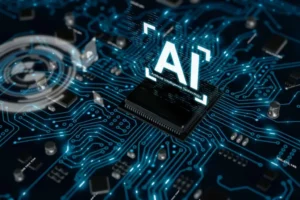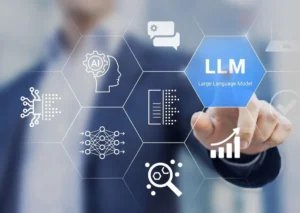A2A Protocol Explained: Key Features and Benefits

Executives keep buying new software, hoping it will make their jobs easier. But in reality, everything remains fragmented. Marketing systems live separately; CRM collects customer data and does not share it with anyone; analytics produce their own conclusions, which stay in the system. As a result, information gets stuck, processes slow down, and teams waste time manually transferring data from one platform to another. In April 2025, Google introduced Agent2Agent (A2A), a protocol allowing AI systems to communicate directly. It does not matter who created the agent or what platform it runs on — A2A protocol gives them the opportunity to communicate without “translators.”
For businesses, this eliminates many everyday problems. What was previously isolated can now automatically coordinate tasks. Data is transmitted quickly and without errors, security is ensured by built-in verification and protection mechanisms, and processes run smoothly without unnecessary human intervention. Keep on reading to learn what is A2A protocol.
What does Agent2Agent Protocol Mean?
A2A protocol establishes communication standards for AI agents within business systems. As an example, in accounting, separate agents handle distinct functions: invoice scanning, payment reconciliation, and compliance monitoring. Traditional implementations require manual programming to connect these agents. A2A enables automatic task coordination between agents.
The protocol operates in a vendor-neutral way. AI agents from different software providers can communicate through A2A regardless of their origin. This interoperability uses established web technologies, including HTTP, JSON-RPC, and server-sent events. Businesses integrate agents without overhauling existing infrastructure.
A2A also has built-in audit capabilities, which are especially important in the financial sector. Each agent action is automatically recorded: who was assigned to the task, when it was completed, and with what parameters. It creates a transparent work history that meets regulatory requirements and helps companies show customers a complete picture of their processes.
The mechanism functions with the Model Context Protocol (MCP). It has synthetic entity linkage to repositories and interfaces. A2A deals with the direct agent to agent communication. One AI pulls market intelligence through MCP, while another crafts analytics via A2A coordination. The result? A streamlined, automated pipeline that transforms raw data into actionable insights.
Among finance teams, it means less manual verification. At present, you track agent activity and see how work is progressing in processes. Scaling goes without increasing the workload on people or increasing errors. The cost of operations is reduced, as less time is spent on manual actions, and the quality of data processing increases.

We are confident that we have what it takes to help you get your platform from the idea throughout design and development phases, all the way to successful deployment in a production environment!
How A2A Came to Life
The idea behind Google’s A2A protocol grew out of the boost in AI adoption after the release of GPT-3.5. The model marked the first time large-scale AI felt practical for everyday use. It sparked a wave of development well beyond simple chat interfaces. Very quickly, the demand was no longer about having a single smart model but about connecting many systems to do work.
Initially, programmers relied on function invocation to bridge these shortcomings. An algorithm could contact an interface, extract information, and utilize it. Though functional, each provider crafted their distinct implementation. Compatibility became a significant headache. The MCP first appeared as a method to simplify linkage between algorithms and utilities. It minimized the hassle of constructing numerous bespoke integrations, yet it failed to resolve the obstacle of agents communicating directly with each other.
Then, A2A became a go-to instrument. Google designed it as a standard for agent-to-agent communication. So specialized AI agents, each with its own strengths, coordinate tasks. Unlike proprietary frameworks that struggled to scale, A2A set the groundwork for collaboration between agents across vendors and domains.

Characteristics of the Protocol
From the very beginning, A2A developers were focused on practice. They made every decision based on the problems that companies encounter every day, rather than on abstract technical tasks. Therefore, it is worth focusing on the main characteristics of the protocol.
- Agent-centric design. Agents are not perceived as subordinates but as skilled workers. They coordinate tasks themselves, share skills and understand workflows without rigid scripts.
- Use proven standards. There’s no need to create something from scratch when standards like HTTP, JSON-RPC, and server-sent events are available. These tools do the job, and companies can integrate right away, without learning new protocols.
- Security is paramount. Agent cards, TLS and JWT form reliable authentication channels. Only authorized agents have access to data and conversations. No compromises here.
- Support for long-running tasks. Business processes are not always built in milliseconds. Billing, compliance, or financial reconciliations take hours or even days. A2A keeps these processes running without dropping the connection.
- Modality agnosticism. Text is convenient, but sometimes audio, video or other formats are needed. The protocol is not restrictive, but works with any type of data.
These decisions create something practical. Agent2Agent protocol works in sometimes chaotic business setups where different vendors, security policies, and business timelines collide. The protocol adapts to existing workflows rather than demanding companies rebuild everything from scratch.
Why is A2A Important?
The value lies in changing how your AI systems collaborate. It turns isolated resources into a coordinated workforce. Your enterprise needs automated processes that cooperate with no friction and keep proprietary data secure. The framework delivers exactly this: it enables your AI agents to communicate efficiently.
Your financial AI analyzes market trends and your marketing automation simultaneously crafts campaign strategies. They work together without exposing sensitive pricing models or customer databases. It optimizes operations and protects vendor relationships and cost structures.
Integration is another factor. Because A2A is based on existing web standards, businesses do not have to restructure their entire technology environment to adopt it. Instead, they introduce it gradually into their workflows, connecting it with platforms they already use while maintaining familiar interfaces and user experience (UX).
Security ties the design together. Enterprise-grade authentication ensures that communication is only established between authorized agents, while secure exchange methods safeguard the information in transit. Among accounting firms that handle confidential financial data, the balance of openness and protection is crucial.
Real-World Applications of A2A
A2A is already working in places where systems need to talk to each other constantly. Supply chain operations become more accurate and faster thanks to A2A. For example, in a large supermarket chain, demand forecasting agents detect a sharp increase in sales of a particular product—say, a popular model of coffee machine—and immediately notify the inventory management system. The logistics agent automatically books trucks to deliver the new batch to the required stores, and the warehouse agent prepares the shipment.
In medicine, A2A is used to speed up the work of clinics. In an oncology center, one agent analyzes lab test results, another collects a patient’s medical history, and a third formats a report for the doctor. At the same time, a compliance agent checks whether medical data retention rules are followed. As a result, the doctor receives a document ready for work quickly, without having to review dozens of systems manually.
In the financial sector, it helps banks process payments. An agent scans invoices, another checks compliance with internal rules, and a third prepares a report for audit. Such a process used to take several hours and required employee intervention. With A2A, tasks are transferred automatically.
In all of these examples, the system creates direct channels of communication between specialized agents. Info flows securely and systems retain their strengths and keep data privacy.
Tips and Reminders for Using A2A
A2A multi-agent systems work well when everything is under control. But if you need to scale the system, problems begin. Why? Because the protocol relies on direct connections between agents. The more agents you add, the more connections there are. And if one element breaks, the entire network can fail. There is another approach: event-driven architecture. Here, agents do not “cling” to each other directly. They simply send updates to a common channel, and the others subscribe to the necessary ones. Thanks to this, there are no unnecessary dependencies, and you can easily add new agents without any hassle.
But security is more complicated. A2A protocol has mechanisms for authentication and authorization, and implementing them correctly is a big job. If the team does not have ready-made tools or clear instructions, they often invent their own solutions. As a result, security holes appear.
A2A should not be implemented in a hurry. The protocol itself offers good opportunities, but it is the team’s approach that decides whether the system will be reliable or become a headache. New technologies only work well if the team is ready to support them properly.
Top Articles
A2A Protocol Explained: Key Features and Benefits
I am here to help you!
Explore the possibility to hire a dedicated R&D team that helps your company to scale product development.






